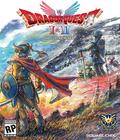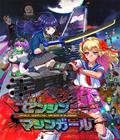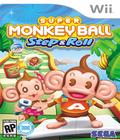Super Monkey Ball: Step & Roll marks the second iteration of Sega's long-running puzzle platforming series on the Wii console. It follows up on the previous release, Super Monkey Ball: Banana Blitz, which introduced a couple of new mechanics to the series, including jumping and boss battles, but Step & Roll actually takes away those additions in favor of some straight-up gameplay that's reminiscent of the previous GameCube titles.
There is one big addition in Step & Roll, and that's the support of the Balance Board as a control mechanism. Players who have a Balance Board can tilt their weight and move the course around, controlling the direction in which their little monkey ball rolls to reach the end of each stage. As far as how well it works, I found the Balance Board controls to be far more challenging than the regular Wiimote. If you've spent a lot of time with workout titles like Wii Fit, you'll have better luck, since the game requires you to have a great deal of balance. For those who aren't as familiar with positioning their weight on the Balance Board, it's definitely a lot harder to control. I found it to be a neat addition, but it's something that a lot of players are going to be frustrated with, and they will probably go back to using the Wiimote instead.
For those of you who have yet to play a Super Monkey Ball title, I'll give you a quick breakdown. In Super Monkey Ball, you don't control your actual character so much as you control the board on which he's rolling. It's comparable to another Wii title called Kororinpa, if you've had a chance to check that out. In Step & Roll, the game is divided up into seven different worlds, with 10 stages in each world, most of which are themed according to the area portrayed on your world map, or hub screen. There are jungles, arctic themes, volcanoes, etc. The stages are comprised of small ledges, areas without rails and various obstacles like tiki statues, and they're designed to make your journey to the goal as frustrating as possible. The idea is that you'll tilt the board around in order to make your monkey ball move, navigating the course and attempting to collect as many banana icons as possible before reaching your goal within the given time limit. It's a pretty simple setup that's very easy to get into, and your score is based on how quickly you finish and how many bananas you collected along the way. The real challenge isn't in finishing each stage but in trying to collect every banana icon along the way, some of which are placed out of the way or in hard-to-reach areas, so it'll definitely require some deft maneuvering of the board.
Compared to previous Super Monkey Ball titles, Step & Roll feels like one of the easiest entries in the series. You can complete the seven stages within four hours, and while there's still quite a bit of challenge in collecting all of the bananas in each stage, the game doles out extra lives pretty frequently. The very forgiving continue system also lets you restart where you left off within a world, and you won't lost any progress other than your score. The lack of difficulty might put off Super Monkey Ball vets and longtime fans, but it'll probably appeal to series newcomers and those who have tried the series and didn't care for it.
In order to alleviate the brisk feeling of the main single-player mode, there's also a bevy of multiplayer games to check out. Step & Roll contains 21 different minigames, most of which can be played with up to four players (only two are for two players), which extends the life of the game considerably. Out of those 21 minigames, I only found a handful that I genuinely enjoyed, and I outright hated more than a few. The rest fell into the middle category; they're worth trying, but they aren't exactly going to liven up the party.
Among the different minigames you'll encounter are Balloon Race, Battle Pinball, Firefighter, Fruit Basket, Hovercraft Battle, Hovercraft Race, Hurdles, Jump Rope, Ladder Climbing, Luge, Monkey Race, Monkey Snowboard, Monkey Target, Ninja Stomp, Red Light Green Light, Seesaw Ball, Sky Diving, Space Ship Landing, Spinning Top Attack, Starlight Swing and Sumo Smash. I'll give you an idea of some of the minigames, but for the sake of brevity, I won't go into detail about all of them.
Balloon Race is a timed event in which you control your monkey by pumping air into a hot air balloon by making pumping motions with the Wii Remote. As you move along the screen horizontally, you'll need to flick the controller to the side to dodge incoming projectiles. It's a pretty simple game that scores you according to your speed in finishing the course.
In Battle Pinball, you'll use the Wiimote and Nunchuk, and you'll control them like flippers on a pinball table. The on-screen pinball table has four corners that are each controlled by a player, and the goal is to hit the balls that are constantly streamed in, and in doing so, you'll change them to your corner's color. If a ball with your color hits a bumper, you gain points, but if you lose a ball to the gutter, you'll lose points. This is a pretty fun and frantic game, and it's definitely one of my favorites.
In the Firefighter minigames, you're shown a small hut that slowly catches fire, and you need to aim at the screen with the Wiimote to direct your stream of water, while making a pumping motion with the Nunchuk to keep the water flowing. This is another simple, run-of-the-mill game, and you're awarded points for each fire you put out.
Fruit Basket is an example of a bad minigame in Step & Roll, mostly because the controls are so precise that they become frustrating. You have a character at the base of a tree, with three baskets in front of him: one to the front, one to the right and one to the left. The baskets are color-coded, and as fruit falls from the tree, you need to direct it to the appropriate basket. The character remains stationary, so all you need to do is flick the Wiimote to the left, right or up to bounce the fruit in the correct direction. However, the movement here is really touchy, and you'll often find yourself making the correct movement but getting the incorrect response from the game, which makes this particular minigame not a lot of fun to play.
In Hovercraft Battle, you control the equivalent of a bumper car, and your goal is to ram your opponent to score points. The harder you hit them, the more points you score, but if you they hit you, you'll lose your points. This wouldn't be so bad if the controls weren't needlessly obtuse, requiring you to tilt the Wiimote and Nunchuk forward to move forward, back for backward, but then a combination of moving one forward and one backward in order to turn right or left. It's a really hard control setup to get used to, and it's made even more difficult by the fact that your vehicle tends to glide by itself instead of remaining stationary when you're not trying to move, making it nearly impossible to line up an attack. This game feels more like something based on luck than skill, and I didn't enjoy that aspect at all.
Hovercraft Race suffers from the same issues that plagued the Battle version, with the controls being way too difficult for the simplicity of the game. In this one, you need to be even more precise with your movements as you attempt to navigate the course and hit all the flags to win. It was far too annoying to enjoy.
The Hurdles minigames was very reminiscent of hurdles in Mario and Sonic at the Olympic Games. Basically, you alternate the Wiimote and Nunchuk in a pumping motion to simulate running, and tap the B button to jump over the hurdles. It's a simple setup, but it's really fun with a group of people.
There's plenty here to keep you busy, in theory, but like I mentioned, there are very few minigames that I found to be fun to play. The rest either felt like minigame padding that you'd see in various other Wii compilations or games that are just plan bad in idea or execution.
Overall, that's pretty much how I feel about Super Monkey Ball: Step & Roll as a whole game. I appreciate the need to scale back the difficulty to draw in new players, but I don't think there's enough content in the main mode to keep people interested beyond the time it'll take to achieve each goal. Only the hardcore crowd that's kept with the series up to this point is going to care about collecting all of the bananas, and those guys are going to find the game so scaled back in difficult that it'll be off-putting. The inclusion of minigames isn't a bad idea, but the actual minigames aren't of a particular level of quality that makes them worth checking out. While there are aspects of Step & Roll that I enjoyed, I generally thought that the title was a pretty big letdown, and it's not nearly as good as the previous entries in the series.
If you've been dying to play a new Super Monkey Ball title, then Super Monkey Ball: Step & Roll probably isn't going to win you over. If you're new to the series, then it's at least worth a rental, but there's no way I'd suggest picking up this one at full price. Wait for the inevitable price drop because there's not enough content here to be worth the current asking price. Also, if you're dying to find out how the Balance Board mechanic works, keep in mind that it's going to be more frustrating than fun. This definitely isn't the Super Monkey Ball sequel for which fans have been clamoring.
Score: 6.0/10
More articles about Super Monkey Ball: Step & Roll











 AiAi and all his friends are stepping onto the Wii Balance Board in an all-new party game for the Wii. Super Monkey Ball Step & Roll brings back what you love about Super Monkey Ball and promises plenty of surprises around every turn. Get ready for a whole new level of monkey madness as Super Monkey Ball Step & Roll rolls into your living rooms!
AiAi and all his friends are stepping onto the Wii Balance Board in an all-new party game for the Wii. Super Monkey Ball Step & Roll brings back what you love about Super Monkey Ball and promises plenty of surprises around every turn. Get ready for a whole new level of monkey madness as Super Monkey Ball Step & Roll rolls into your living rooms!














































